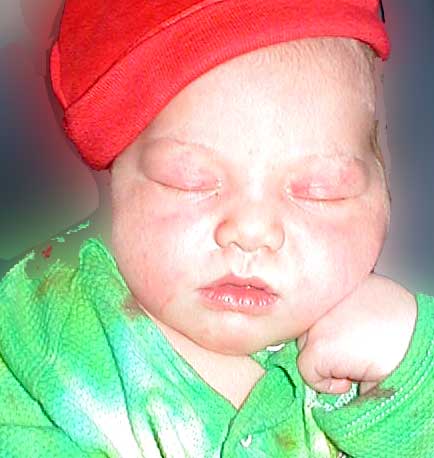baby safety

Anyone who sells or promotes a product should accompany that pitch with advice for using the product safely. But it’s lately occurred to me that “babywearing safety” is mostly the same thing as “baby safety” and is good for any parent or caregiver to be familiar with, whether or not a baby carrier is in use:
- an infant’s neck should not be curled with the baby’s chin against baby’s chest–this obstructs the airway and has proven fatal in small or weak infants. When your baby is in your arms, crib, carseat, swing, baby carrier, or anywhere else, make sure that you can easily fit your two fingers in the space between chin and chest to ensure that your baby has a clear airway.
- as much as possible, you should be able to see your baby’s face. Proximity is the best defense against SIDS both because your baby’s body will take breathing cues from your body, and because you will be there to observe if something goes wrong and can intervene before it is too late. Babies’ faces should not be covered. Even a breathable fabric will leave your baby inhaling stale air and will prevent your being able to see his or her face.
- spines have a natural curve that we should support. Keeping a baby’s back straight and flat is not optimum, nor is a concave curve, as often occurs when a baby is worn facing outward (with the baby’s back against the babywearer’s stomach). Teach your baby to lie flat in a baby device only in moderation and stay mindful that each flat baby holding device you use adds up to more flattened-spine time. This may include strollers, carseats, cribs/bed (if baby sleeps on back), playmats, etc. Remember that evolutionarily, that baby’s body expects to be in arms most of the time, where it can curl up into a desirable position.
- spines are developing throughout the first year of your baby’s life, and it is important not to put stress on the spine by sitting all of the baby’s weight on the base of the spine. Baby carriers that hold babies upright but do not support their thighs, suspend baby by the crotch, with the entire weight of baby resting squarely on the base of his or her spine. When using a device to carry baby upright, make sure it is in a more seated position, with the carrier coming under to support baby’s thighs at least out to each knee.
- when holding, wearing, or otherwise keeping baby close to you, make sure your activities are safe or out of baby’s reach: cooking, cleaning products, etc. Don’t chop veggies if your baby’s waving arm is within reach in either a high chair or a back carry. Ditto with the hot burner, using chemicals with fumes, and other hazards that I’d hope would be obvious!
What did I miss? Leave a comment to let me know!

Sandra @ Baby Swings June 6, 2011 at 1:52 am
Yes,
The tips above you said are invaluable for parents those who are going to buy a baby carrier.
Sandra Jackson
Baby Swing Reviews
Elizabeth Sibotshiwe November 11, 2011 at 4:55 pm
Carers and parents should ensure that they have read instructions of any products over and over till they understand them before using the products.
Using a baby wrap,tie or carrier is a hands on skill that requires practice until the user is well versed with the product. This is more so when attending to babies and toddlers who are totally dependent on the adult for their safety.
Nothing can be taken for granted.
hitmon July 10, 2012 at 1:05 am
I’m sure the content is appropriate for use with children.
And that is what I learned. I will keep it as a guide.
children smarter | Baby in Car
The child seat | Knowledge Child Safety
buy baby stroller | rule the seat